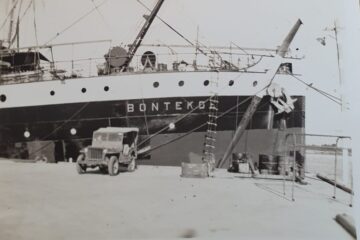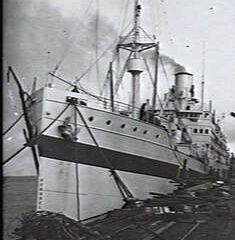A Dutch naval squadron visited Australia in 1930, led by Rear Admiral C.C. Kaijser on the light cruiser HNLMS Java with the destroyers De Ruyter and Evertsen. The following ports were visited successively: Fremantle, Adelaide, Melbourne, Sydney, Wellington, Auckland, Brisbane, Boela (New Guinea) and Ambon. On November 28, the squadron arrived again in Surabaya.
The visit was part of a goodwill tour of the South Pacific by the Dutch Navy. The ships were met with a warm welcome by the Australian public, and the visit was seen as a sign of the growing friendship between the Netherlands and Australia

Photographer: Samuel J. Hood Studio Collection.
The ships arrived in Sydney on 3 October 1930. The ships berthed in West Circular Quay and The Sydney Morning Herald reported on the ‘unfamiliar spectacle’ of the Dutch squadron arrival.
On 10 October, the squadron hosted a reception on board JAVA ‘as a return for the hospitality they had received while in Sydney’. The SMH reported that distinguished guests were greeted by the Dutch Consul-General P E Teppema, Madame Teppema and Rear-Admiral Kayser. Madame Teppema is described as wearing ‘a jacket suit of black morocain, with a white satin blouse and a black baku hat’ and carrying ‘a bouquet of pink carnations.’
The woman greeting Admiral Kayser is possibly Lady Annie Riddle, wife of the Governor of the Commonwealth Bank of Australia, Sir Ernest Cooper Riddle. The woman to her right is possibly her daughter, Enid Riddle.
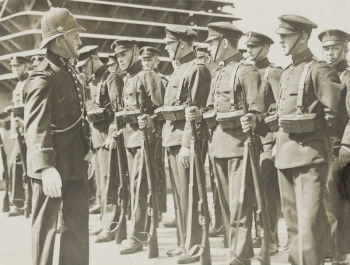
The light cruiser Java was the flagship of the Dutch fleet at the time. The destroyers De Ruyter and Evertsen were armed with five 120mm guns each. The ships were accompanied by a Dutch naval air detachment, which included two seaplanes.
The visit was a major event in Australia at the time. The visit was covered extensively by the Australian media, and the ships were visited by thousands of people during their stay in Australia.
The visit was seen as a sign of the growing friendship between the Netherlands and Australia. The two countries had been cooperating closely in the South Pacific for many years, and the visit was seen as a way to strengthen those ties.
The visit was also a chance for the Dutch to show off their modern navy to the Australian public. The ships were impressive vessels, and their visit helped to raise awareness of the Dutch Navy in Australia.
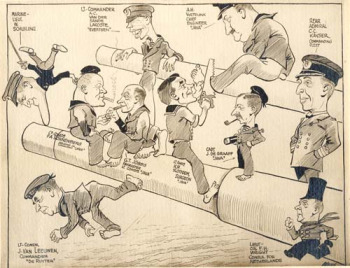
A humorous pen drawing from the Melbourne Herald of September 29, 1930 on the occasion of the visit of the Dutch squadron to the city of Melbourne.. On and around two gun barrels are depicted (in sailor suits) eight chief officers of HNLMS. cruiser Java and HNLMS. destroyers Evertsen and De Ruyter. Far right (in correct uniform) Rear Admiral C.C. Kayser, the squadron commander. Bottom right lt.col. F.H. Wright (in farmer’s smock), Dutch consul in Australia. Source: Mariners Museum Netherlands.
Light cruiser HNLMS Java and the Battle of the Java Sea
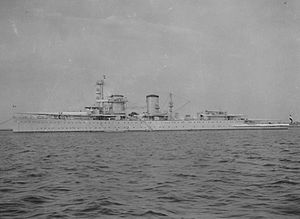
The Java class cruisers had a standard displacement of 6,776 t and a full load displacement of 8,339 t. They were 155.3 m long overall and had a beam of 16 m and a draft of 6.1 m. The cruisers were powered by three-shaft Germania geared steam turbines with eight Schultz-Thornycroft boilers that generated 73,000 shp. This gave them a top speed of 31 knots and a range of 3,600 nautical miles at 12 knots.
The cruisers had a complement of 525 officers and enlisted men. Their main armament consisted of ten Bofors 150 mm (5.9 in) guns. They also had eight (Java) or six (Sumatra) Bofors 40 mm anti-aircraft guns and eight Browning .50 machine guns. The cruisers’ armor consisted of a 7.5 cm (3.0 in) belt, 2.5 to 5 cm (0.98 to 1.97 in) deck, 12.5 cm (4.9 in) conning tower, and 10 cm (3.9 in) shields.
The cruisers could carry two Fokker C.VII-W floatplanes.
HM Java was already outdated technologically by the time she was commissioned in 1925. Java saw action, mostly as a convoy escort, during the Spanish Civil War and during the early stages of World War II. At the outbreak of war with Japan Java was in Dutch East Indies waters where she formed part of the fleet of ABDA command under the command of Rear-Admiral Karel Doorman. She fought in the Battle of Badung Strait in February 1942. During the Battle of the Java Sea on 27 February 1942, she was sunk by a Long Lance torpedo from the Japanese cruiser Nachi and sank with heavy loss of life.
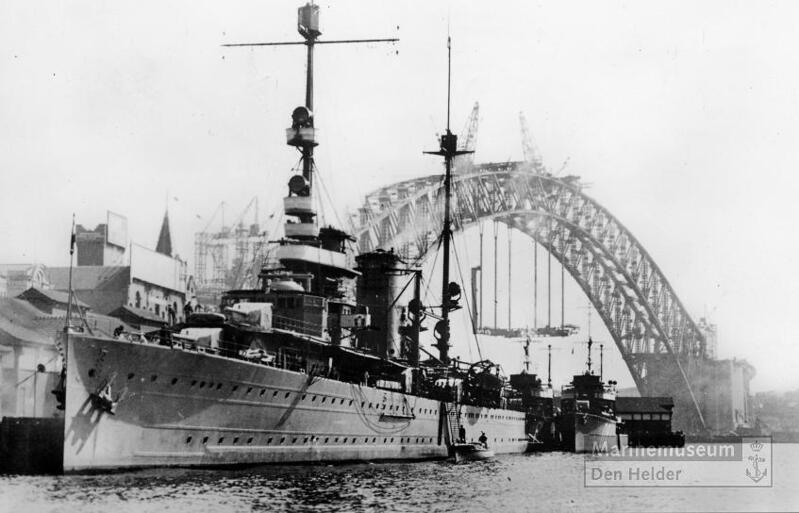
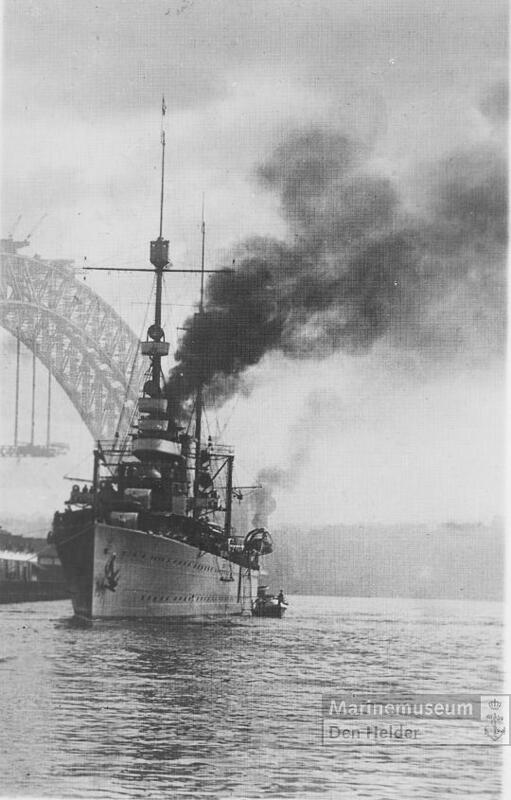
Source Java: Wikipedia
Lack of early collaboration
In 1934 a goodwill mission from Australia to the Netherlands East Indies, led by Deputy Prime Minister Sir John Greig Latham, proposed closer naval connections between the two countries did not come to any fruition. A similar request was rejected by the Netherlands in 1939 as they wanted to stray neutral in the looming war conflicts. To maintain neutrality secrete collaboration discussions finally started to take place in 1940. Collaboration started in fullest after Germany invaded the Netherlands and the Australians and Dutch started to collaborate to protect merchant shipping in the Pacific Ocean as they ships and convoys were attacked by German raiders. Dutch received unrestricted permission to operate in Australian waters for that purpose. Naval attaches were exchanged between Australia and the Netherlands Est Indies in 1941. The HNLMS Tromp was involved in the flotilla that start the search for sunken HMAS Sydney. Finally after the Netherlands declared war on Japan, full collaboration started to take place.
